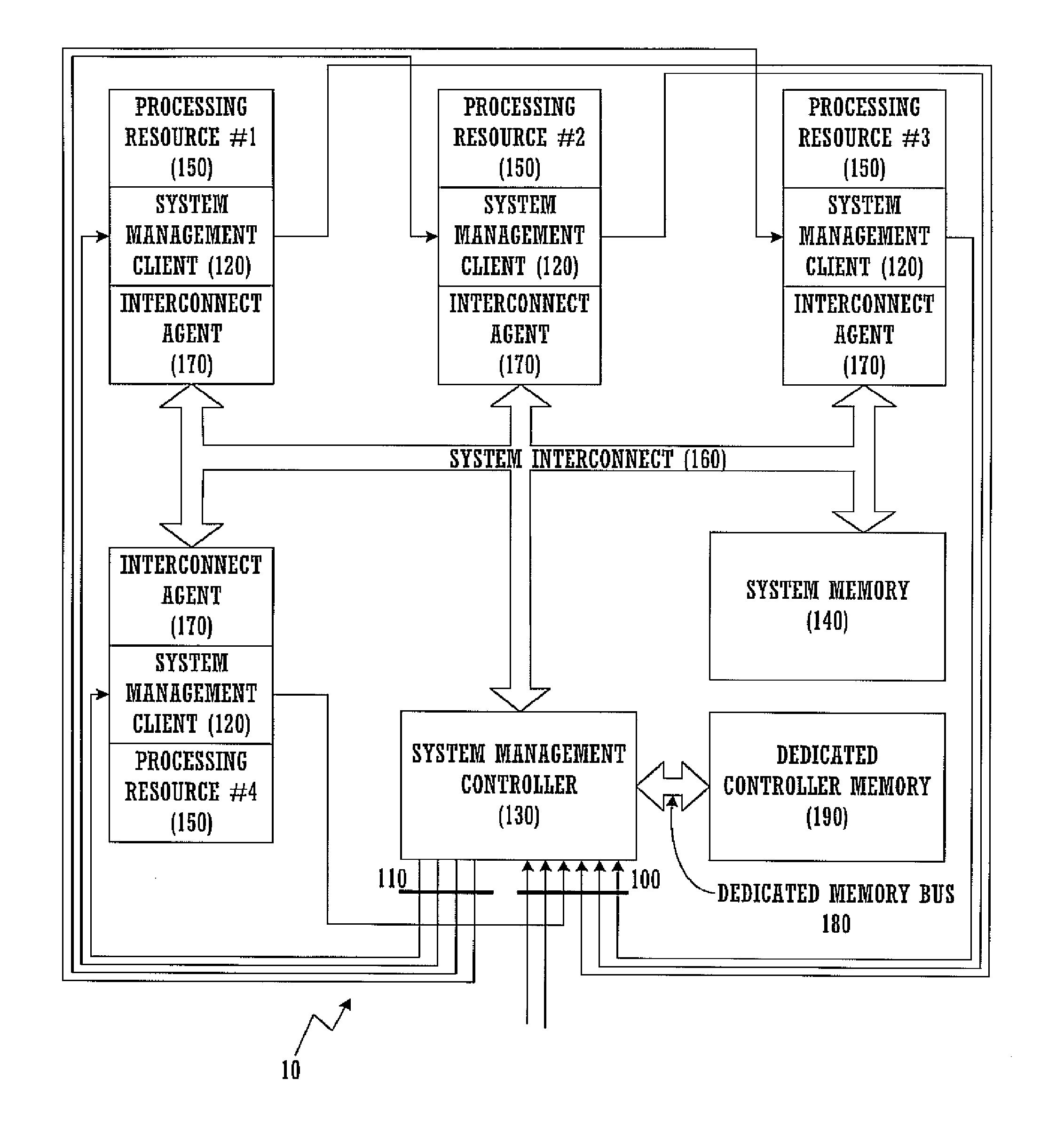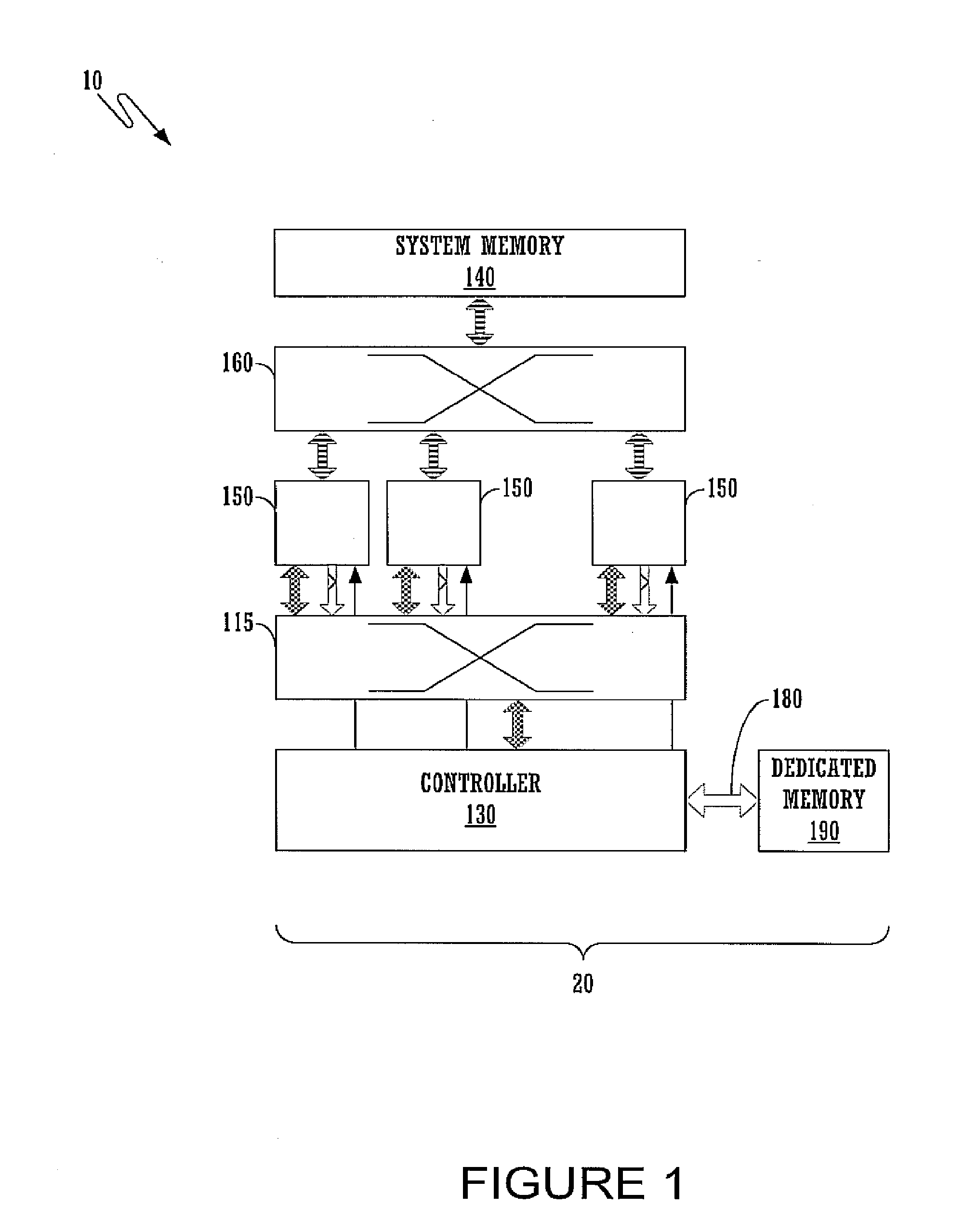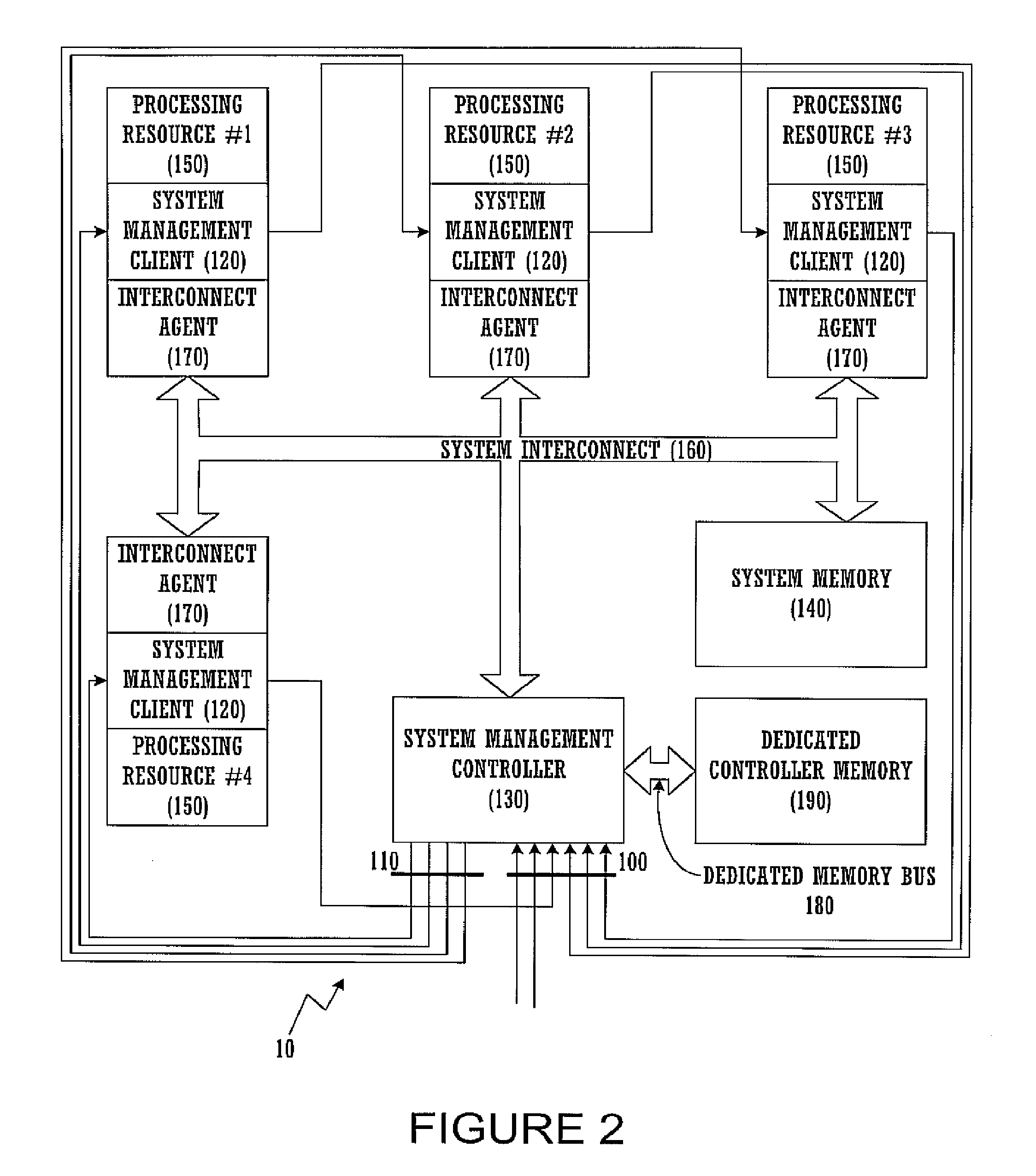Resource management in a multicore architecture
a resource management and multicore technology, applied in the direction of multiprogramming arrangements, program control, instruments, etc., can solve the problems of inability to compare pure” mips ratings, inefficient running the web browser that runs on the phone's screen, and inability to achieve the same amount of useful work of instruction, etc., to achieve efficient allocation of tasks and efficiently master the “run-time” activities of the underlying system
- Summary
- Abstract
- Description
- Claims
- Application Information
AI Technical Summary
Benefits of technology
Problems solved by technology
Method used
Image
Examples
Embodiment Construction
[0066]FIG. 1 shows a logical view of a system framework 10 incorporating features that are in accordance with an embodiment of the present invention. The framework 10 comprises a plurality of processing resources 150, each of which may be similar or dissimilar to others of the processing resources 150, and each of which may be of arbitrary complexity. Each processing resource shares access to a common system memory 140 where shared data is stored via an interconnect 160. It will be understood that not all system memory 140 is necessarily common to all processing resources 150, of course.
[0067]The system framework also comprises a centralised task allocation and management system 20 in accordance with an embodiment of the present invention. The centralised task allocation and management system 20 includes a system management controller 130 and a dedicated tightly coupled memory interface 180, connected to a dedicated tightly coupled memory 190. Each processing resource 150 is able to...
PUM
 Login to View More
Login to View More Abstract
Description
Claims
Application Information
 Login to View More
Login to View More - R&D
- Intellectual Property
- Life Sciences
- Materials
- Tech Scout
- Unparalleled Data Quality
- Higher Quality Content
- 60% Fewer Hallucinations
Browse by: Latest US Patents, China's latest patents, Technical Efficacy Thesaurus, Application Domain, Technology Topic, Popular Technical Reports.
© 2025 PatSnap. All rights reserved.Legal|Privacy policy|Modern Slavery Act Transparency Statement|Sitemap|About US| Contact US: help@patsnap.com



